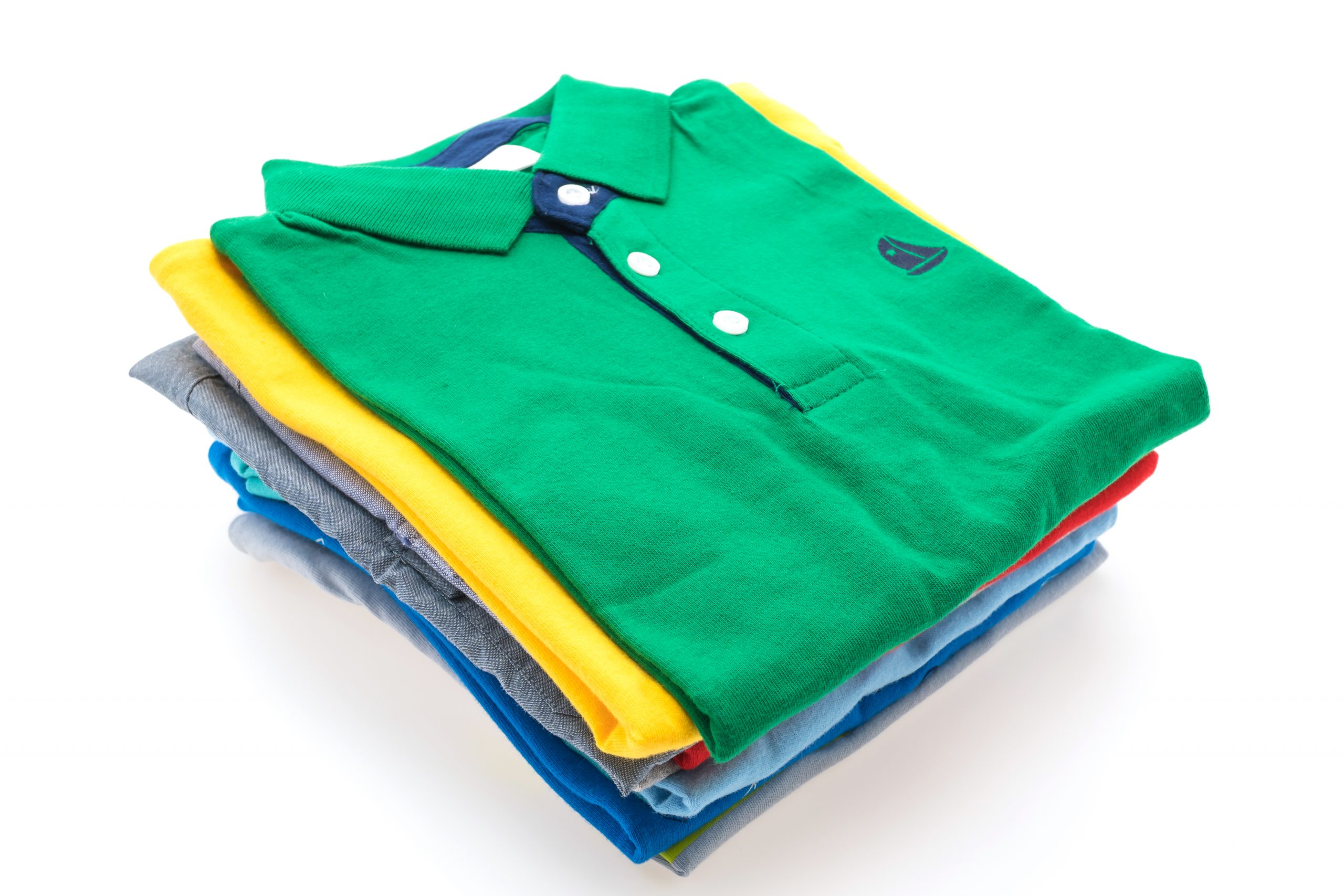“Clearing the ‘ornamental hurdle’ and preserving your trademark rights are key to combating online and retail pirates looking to cash in on your IP.”
 The value of your company’s intellectual property cannot be understated, particularly in the current economic climate. But this should not be news to you, especially if you are in the business of displaying your brand name or logo on merchandise for sale. In that case, you know how important it is to protect your trademarks, so as to thwart the attempts of opportunistic parties that seize upon your IP for their own profit.
The value of your company’s intellectual property cannot be understated, particularly in the current economic climate. But this should not be news to you, especially if you are in the business of displaying your brand name or logo on merchandise for sale. In that case, you know how important it is to protect your trademarks, so as to thwart the attempts of opportunistic parties that seize upon your IP for their own profit.
Case in point: online companies selling apparel featuring the names, logos, and even mascots of high schools and colleges nationwide without any prior authorization to do so. How do businesses like these get away with what seems to be a fundamentally illegal business model—selling knockoff hoodies, tees, and similar spirit wear? Easy: by identifying and then exploiting academic institutions that have yet to take the appropriate steps to register their trademarks or, at the very least, establish common law trademark rights.
If and when caught in the act, these unscrupulous retailers argue away their transgressions by claiming they are using the IP in question as mere ornamentation and not a source indicator, or that it is simply being used to express affiliation or admiration, which shields them from liability for infringement—at least in theory. In the apparel business, this is a refrain heard all too often, and one that may or may not hold water.
Does the foregoing scenario resonate or ring true? If so, here is a bit more background and an action plan that will certainly prove helpful.
Cutting to the chase: the lesson for IP owners (in academia and otherwise) selling clothing and similar branded merchandise is to register your trademarks. To do so, you must avoid your mark being rejected by the United States Patent and Trademark Office (USPTO) as mere ornamentation (detailed below). But rest assured, once your mark is approved by the USPTO upon making proper “use” of it as a “source indicator,” the presumptions and privileges that come with federal registration will reasonably keep opportunists at bay.
Ornamental vs. Trademark Use: Is There Really a Difference?
The answer to this question is a resounding YES. Words, phrases, and designs that adorn articles of clothing (say, the front of a sweatshirt) or similar categories of consumer goods in a merely decorative fashion indicate ornamental use. This is something very different than when those same words and embellishments identify the source of the product—by way of example, that very same sweatshirt bearing the specific name and logo of a recognized sports team that creates the impression of a trademark. Put another way, ornamentation or—for instance—a slogan that is just an element of a piece of clothing (read: a decorative feature) would not likely qualify as a trademark, while identifiers on that garment signaling origin of the product or the brand itself certainly would.
So what does this mean to you and the universe of other owners of IP selling apparel? All of you must be careful to use your marks as source indicators, all the while steering clear of the pitfalls of allowing brand collateral to function simply as ornamentation, which could lead to unchecked infringement as described above and the USPTO issuing an ornamental use refusal when it comes time to apply for trademark registration.
Understand that there are rather straightforward steps that can be taken to avoid such a refusal by the USPTO—one being the placement and location of your mark on items for sale. Of course, experienced legal counsel can provide necessary guidance as to how best to safeguard your IP; suffice it to say for purposes of this writing that these issues of ornamental use and the importance of IP protection should be top of mind.
Your Trademark in Commerce and the Benefits of Federal Registration
Clearing the “ornamental hurdle” and preserving your trademark rights are key to combating online and retail pirates looking to cash in on your IP. Toward that end, it is not enough to (literally and figuratively) position your name, logo, and the like on merchandise as source indicators; you need to use your mark in commerce as well. This is not only a must to obtain federal registration, but also required to establish a common law trademark. Translation: to create a trademark and earn approval from the USPTO, your product must be sold or transported within the United States in the ordinary course of business, and your mark should be displayed on the product itself or on its packaging, tags and/or labels.
Of note, a common law trademark is created when you are first to use your mark in commerce in any given locale. Toward that end, making use of the superscript “TM” to claim your brand is recommended; parenthetically, the circle-R (“®”) is reserved for registered trademarks. While the Internet has muddied the concept of common law trademark rights to the extent the Internet has no geographic boundaries, a common law trademark still remains tied to the use made under that mark, as opposed to federally registered trademarks that have a presumption of ownership for nationwide use. As such, while common law rights may allow you to demand that a party knocking off your branded apparel cease and desist from doing so, your leverage and capacity to be made whole from any unauthorized use of your mark are limited. Which is why federal trademark registration is highly recommended.
Registering your trademark with the USPTO provides many advantages. Those especially relevant to this discussion are the ability to: (1) block confusingly similar marks on related goods; (2) sue for damages in the event of litigation; and (3) prohibit the ornamental use of your IP, which goes to the heart of the problem some unsuspecting sellers of apparel—like the high schools and colleges described at the outset—are facing.
Enforcing Your Trademark
Once the USPTO issues a registration certificate for your trademark, fending off unauthorized apparel retailers becomes much easier because the presumptions in your favor increase your ability to follow through on legal threats. This is true even when those selling knockoffs of your branded clothing justify their wrongdoing based upon the mere ornamentation technicality. And that is because trademark registration constitutes prima facie evidence of your ownership in and the validity of your mark, as well as your exclusive right to use it in commerce. Thus, in the event an unauthorized party exploits your trademark, the burden falls on that infringer to explain its behavior.
Bottom line: armed with the protections that come with a federally registered trademark, those who dare infringe upon your rights by selling apparel bearing your IP without authorization open themselves up to receipt of a cease and desist letter with real teeth and exposure to significant monetary damages. Which brings us back to the exploited schools mentioned at the beginning of this story: they would certainly be in a much better position had they been mindful of ornamental use and safeguarded their IP accordingly.
Image Source: Deposit Photos
Copyright: mrsiraphol
Image ID: 129007320

![[IPWatchdog Logo]](https://ipwatchdog.com/wp-content/themes/IPWatchdog%20-%202023/assets/images/temp/logo-small@2x.png)

![[Advertisement]](https://ipwatchdog.com/wp-content/uploads/2024/04/Artificial-Intelligence-2024-REPLAY-sidebar-700x500-corrected.jpg)
![[Advertisement]](https://ipwatchdog.com/wp-content/uploads/2024/04/UnitedLex-May-2-2024-sidebar-700x500-1.jpg)
![[Advertisement]](https://ipwatchdog.com/wp-content/uploads/2024/04/Patent-Litigation-Masters-2024-sidebar-700x500-1.jpg)

![[Advertisement]](https://ipwatchdog.com/wp-content/uploads/2021/12/WEBINAR-336-x-280-px.png)
![[Advertisement]](https://ipwatchdog.com/wp-content/uploads/2021/12/2021-Patent-Practice-on-Demand-recorded-Feb-2021-336-x-280.jpg)
![[Advertisement]](https://ipwatchdog.com/wp-content/uploads/2021/12/Ad-4-The-Invent-Patent-System™.png)






Join the Discussion
One comment so far.
Anon
August 26, 2020 11:25 amminor nit:
“that it is simply being used to express affiliation or admiration”
That expression of ‘affiliation’ would have the opposite effect as stated.